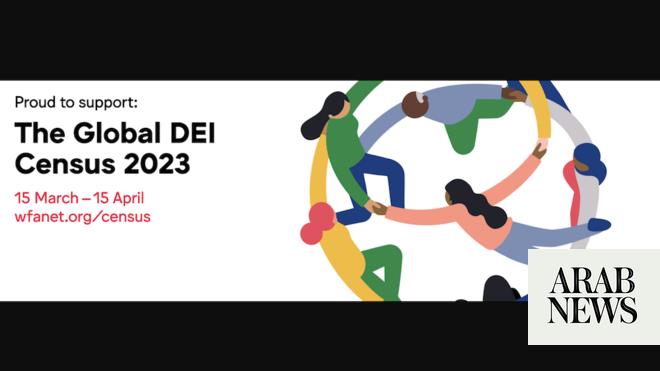
Most common forms of discrimination globally were reported on the basis of age and family status
DUBAI: The initial results of the first census on diversity, equity and inclusion initiated by the World Federation of Advertisers to assess diversity challenges facing the marketing and advertising industry have been released.
Initial results identified key challenges around family status, age, and gender as well as ethnicity and disability.
It found clear gaps in lived experiences when these groups were compared to the industry average, both in individual markets and globally. For example, on Kantar’s Inclusion Index, which is generated by asking questions about people’s sense of belonging, the absence of discrimination, and the presence of negative behavior, men scored at 69 percent compared to women at 61 percent.
“This has been a Herculean but long-overdue effort. For the very first time, we hear and see the marketing industry in all its different facets and nuance,” said Stephan Loerke, CEO of the WFA.
Despite these serious concerns, the marketing sector still outperformed every other category analyzed by research partner Kantar, scoring an overall 64 percent on the index, ahead of the next highest sector, health and pharmaceuticals, on 60 percent.
The research effort was led by the WFA in close collaboration with agency associations including the European Association of Communication Agencies, Voxcomm, Cannes Lions, Advertising Week, The Effies, GlobalWebIndex, Campaign, the International Advertising Association and Kantar.
The most common forms of discrimination identified by the survey were family, status and age, with 27 percent agreeing that their company does not treat all employees fairly regardless of family status and 27 percent agreeing that their company does not treat all employees equally regardless of age. Thirty-six percent of respondents agreed that age can hinder one’s career, while 40 percent of women agreed that family status could hinder one’s career.
These statistics reflect a key finding from the census: Women’s experiences are notably poorer than men’s. There is also strong evidence of a gender pay gap in some markets. In the US and Canada, for example, the gap is worst among industry starters, with a 13 percent gap in the US and a 20 percent gap in Canada.
There were similar findings for ethnic minorities, who scored lower on key sentiments, such as “I feel like I belong at my company,” than ethnic majority groups in nearly all markets. In the US, 17 percent said they faced discrimination based on their racial background. In a number of markets, this was also reflected by a pay gap. However, in many markets surveyed, ethnic minorities or foreign nationals reported being paid more than the ethnic majority.
In an industry struggling to find the right talent, the lack of diversity and inclusion is of grave concern, with 17 percent saying they were likely to leave their current company as a result of the lack of inclusion and/or discrimination they had experienced. Fifteen percent said they would leave the industry entirely.
The Netherlands performed best as a country on this issue, with only 9 percent saying they would find new employment within the industry.
“There is a confidence and strong sense of belonging that rings true of the marketing industry,” said Loerke.
However, there are significant minorities in all countries saying they witness negative behaviors and discrimination on account of their age, family status, gender, ethnicity, race, disability, mental health and sexuality, he added.
“No company or industry can ignore this; a line has been drawn in the sand and we now know where progress must be made. The onus on us all now is to work together to make our industry fairer, more diverse and more inclusive — and to measure our common progress in a second wave in the spring of 2023,” he said.
The results are based on more than 10,000 responses from 27 markets around the world conducted from June to July 2021, with the online survey identifying not just the demographics of participants but also their sense of belonging, as well as experience of discrimination and demeaning behavior.
The full findings for each specific market will be shared later this year. The results will also feed into the work of the WFA Diversity and Inclusion Task Force as well as national action plans led by WFA national associations around the world.









